1. Elephants and Manatees
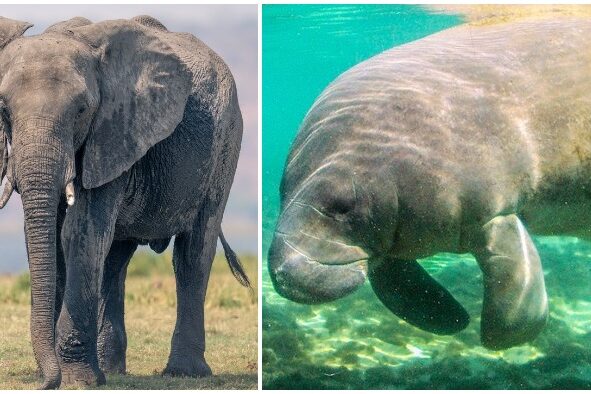
Picture an elephant wading through a river, using its trunk like a snorkel. Now, shrink it down, smooth out its wrinkly skin, and let it float lazily through warm coastal waters. What do you get? A manatee. These slow-moving sea cows and Africa’s largest land mammals share an ancient ancestor that once roamed the Earth millions of years ago. While elephants evolved into the giants of the land, their aquatic relatives took a different path, trading savannas for seagrass meadows. And if you look closely, you’ll find traces of their shared lineage—manatees still have tiny fingernails on their flippers, a direct relic of their elephant ancestry.
Beyond their physical similarities, these gentle giants also share an affectionate, slow-moving nature. Both elephants and manatees are highly social, relying on their communities for protection and interaction. While elephants form tight-knit herds led by matriarchs, manatees prefer loose-knit gatherings, coming together when it suits them. But unlike their land-dwelling cousins, manatees have fully committed to life underwater, spending most of their time grazing on seagrass like it’s an all-you-can-eat buffet. Two different worlds, one shared history—evolution sure knows how to keep things interesting.
2. Crabs and Spiders
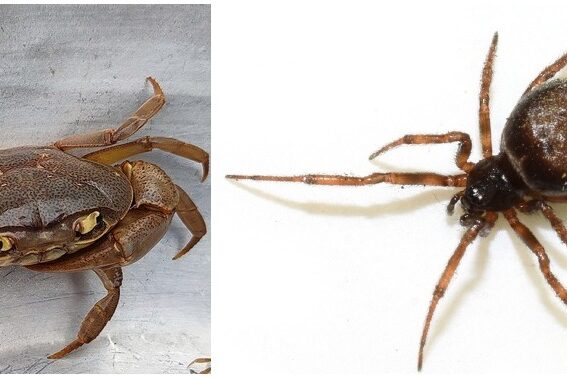
Imagine showing up at a family gathering only to find out your long-lost cousin is an eight-legged creeper who spins webs for a living. That’s exactly the situation with crabs and spiders. Despite their vastly different lifestyles—one scuttling across the ocean floor, the other lurking in dusty corners—these two creatures are part of the same arthropod family, Chelicerata. It’s easy to assume that crabs are more closely related to lobsters, but in reality, their true kin includes arachnids like scorpions, ticks, and, yes, spiders. Both crabs and spiders share exoskeletons, jointed legs, and an unsettling ability to survive in unexpected places. The next time you dig into a seafood platter, take a moment to appreciate the fact that you’re essentially eating the distant relative of that eight-legged guest lurking in the corner of your room.
To make things even stranger, crabs and spiders also exhibit a survival trick known as molting—shedding their old exoskeletons to make way for growth. And while a spider’s silk-spinning abilities are legendary, crabs have their own clever tactics, like using seaweed or shells as camouflage. So, whether you’re dealing with a spider on your ceiling or a crab in a tide pool, just remember: these creatures are more alike than they seem. One dominates the land, the other the sea, but evolution has woven them into the same bizarre family tree.
3. Hippos and Whales
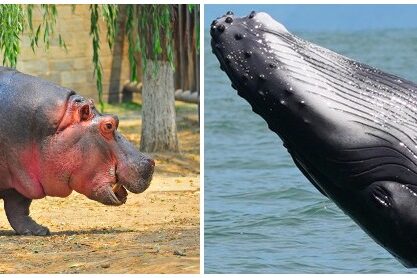
If a hippo and a whale walked into a bar… well, first of all, that bar would need some serious structural reinforcement. But here’s the punchline—these two seemingly unrelated creatures are actually each other’s closest living relatives. Hippos and whales share a common ancestor from roughly 55 million years ago, a four-legged, semi-aquatic creature that decided to take evolution on two drastically different journeys. One group ventured deeper into the ocean, giving rise to the sleek, vocal, and highly intelligent marine mammals we now know as whales and dolphins. The other group stayed on land, eventually evolving into the barrel-shaped, territorial, water-loving hippos we recognize today.
Despite their vastly different lifestyles, hippos and whales still share striking biological traits. Both animals communicate through vocalizations—whales through haunting underwater songs, hippos through grunts and bellows that sound like something straight out of a dinosaur documentary. Additionally, both have thick layers of blubber for insulation, unique heart structures, and an odd affinity for water. Next time you see a hippo yawning in a river, just imagine it as a distant cousin of the majestic blue whale—because in evolutionary terms, that’s exactly what it is.
4. Chickens and T-Rex
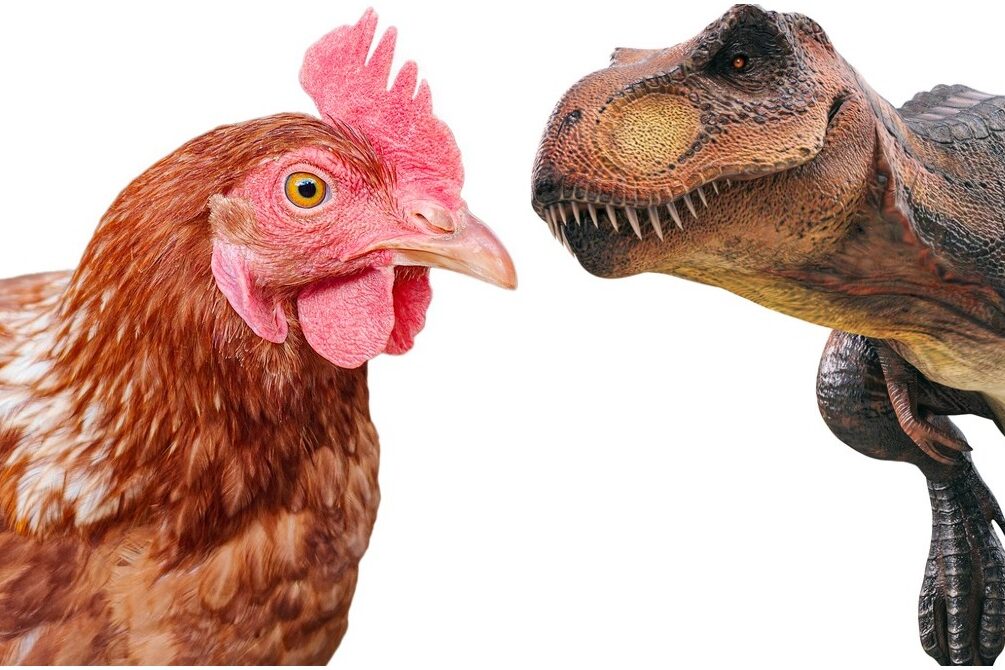
Your dinner might just be the descendant of one of history’s most fearsome predators. Yes, the unassuming modern chicken is a close relative of Tyrannosaurus rex. It sounds like something straight out of science fiction, but the genetic evidence is clear—birds, especially chickens, are living dinosaurs. By comparing molecular structures found in well-preserved T. rex fossils with modern birds, scientists have confirmed that today’s clucking farm animals are essentially miniature versions of their prehistoric ancestors.
The clues are everywhere. That jerky, precise head movement? Classic predatory behavior. The scaly feet? A direct link to reptilian ancestors. Even their wishbones are a throwback to the anatomy of raptors and theropods. While chickens have traded razor-sharp teeth for beaks and talons for drumsticks, they still carry the echoes of a fearsome past. Next time you bite into a crispy chicken wing, just remember—you’re dining on the evolutionary cousin of a creature that once ruled the world.
5. Horses and Rhinos
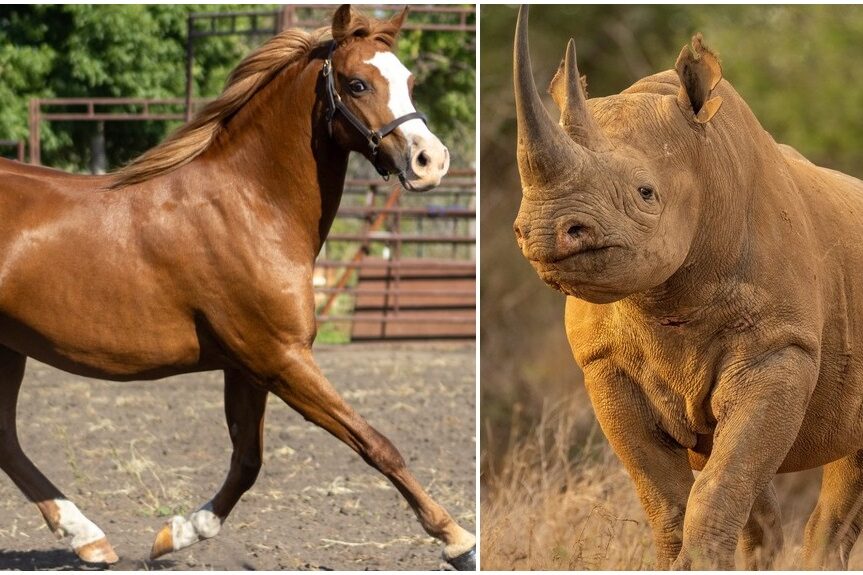
One is a symbol of grace and speed, the other a tank-like grazer with a built-in battering ram. Yet horses and rhinos share a common ancestor from millions of years ago. Both belong to the order Perissodactyla, also known as odd-toed ungulates. While horses evolved into agile, domesticated companions, rhinos took the bulkier route, growing thick armor-like skin and massive horns for protection.
Despite their obvious differences, these two animals share similar digestive systems, skeletal structures, and hoofed feet. Early perissodactyls were small, multi-toed creatures, but over time, horses refined their limbs into single hooves for speed, while rhinos bulked up and became the living bulldozers we see today. Evolution split the family, but the genetic bond remains—two very different paths, yet the same deep-rooted origins.
6. Pangolins and Dogs
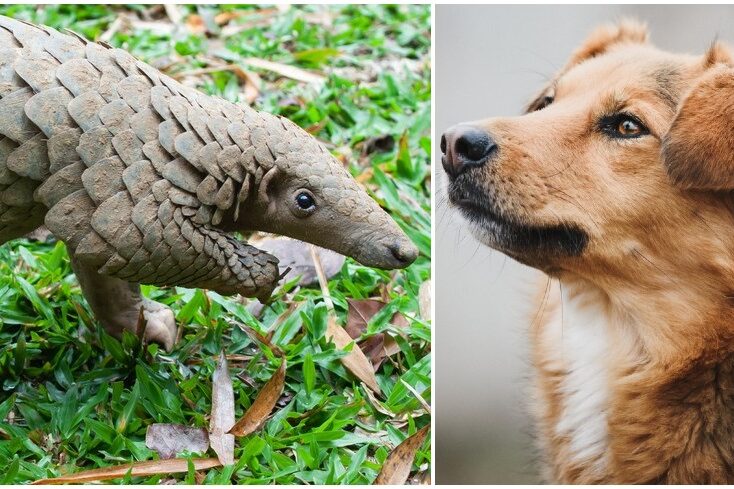
One is covered in keratin scales, the other in fur, yet pangolins and dogs share a deep ancestral link. Pangolins, often mistaken for reptiles, are actually mammals, distantly related to carnivores like dogs, bears, and cats. While dogs evolved into hunters and loyal companions, pangolins took a different evolutionary route, developing armor-like scales and a tongue so long it extends into their ribcage.
Unlike their canine cousins, pangolins rely on their powerful claws and sticky tongues to feed on termites rather than chasing prey. But beneath their scaly exterior, they share mammalian traits such as warm-blooded metabolism, live births, and specialized teeth—or in the case of pangolins, the complete lack of them. It’s a strange connection, but one that proves evolution is full of surprises.
7. Humans and Starfish. Yes? Strange but True!
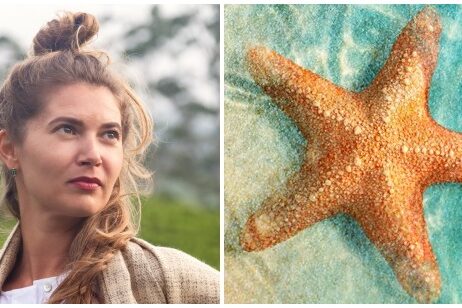
Believe it or not, your family tree includes a distant branch that links you to a five-armed, brainless sea creature. Humans and starfish both belong to the superphylum Deuterostomia, meaning that at some point in the deep past, we shared a common ancestor. While humans evolved into complex beings with spines, intelligence, and an addiction to technology, starfish opted for a more laid-back existence—regenerating lost limbs and gliding across the ocean floor with tube feet.
It’s a humbling thought. While we built civilizations, our distant relatives mastered the art of self-repair. Evolution may have sent us in vastly different directions, but the connection remains. If nothing else, this proves that nature’s family trees are stranger than fiction.


